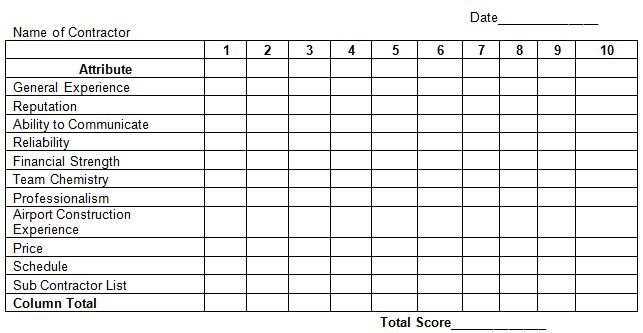FBO Survival Series - Survival Tip #6: Take Off the Blinders
/By John L. Enticknap and Ron R. Jackson, Aviation Business Strategies Group
Welcome to the sixth installment of our continuing AC-U-KWIK FBO Connection Series: FBO Survival. This series focuses on the various strategies and tactics needed to survive the daily rigors of running a successful FBO operation.
“But if you are going to wear blinders then you do not know the world.”
-Miriam Makeba
We’re all guilty of doing it. We get so busy, and maybe a little complacent, and forget to take the blinders off in order to see and experience our FBO from the customer’s perspective.
At our NATA FBO Success Seminar, we discuss “Management by Walking Around.” This involves getting out of the office and observing the workings of your FBO — while wearing the hat of the customer. It’s like being a restaurant owner and making sure the operation is running smoothly.
Not long ago we were on a commercial flight and in the seat next to us was a pilot for one of the leading aircraft fractional providers. So, we took advantage of the situation and began asking some questions about the level of service he was looking for in an FBO. He started by telling us some of the things he observed while taxiing onto the ramp of an FBO for the first time.
“I can always tell if I’m going to get good customer service by the way I’m greeted on the ramp by the line service personnel,” he began. “If I don’t see a line service technician guiding me into a parking spot with crisp and proper hand signals, then I know we’re in for less than good time.”
“Then I look at how clean the ramp looks. Is the ground equipment looking good, parked with chocks under the wheels, traffic cones placed around parked aircraft?” the pilot asked. “If so, then I know this FBO is following good operating procedures.”
He said that if he is disappointed with his arrival, then he knows he’ll be disappointed with the rest of the service experience.
We could tell this pilot knew his stuff and was anxious to tell us more. So, we probed a little further.
“If the APU is filthy dirty, I wonder what the bathrooms look like,” he said, poking his hand into the seat pocket in front of him. “The same way with an aircraft, if you see a bunch of stuff sticking out this seat pocket that doesn’t belong here, don’t you sort of wonder what kind of maintenance the aircraft gets?”
He made some good points and we were readily taking mental notes to share in our seminars.
All of this begs the question: When was the last time you got out of your office and walked around the facility and out onto on the ramp?
Observe from a Pilot’s Perspective
Why not look at your business the same way a customer would? Walk all the way out to the entrance to your ramp and observe the view pilots have of your FBO. Can you see what the pilots see? Is the first impression what you want?
Do you observe a clean well organized ramp, equipment parked and looking good with safety cones in place? How about your fuel trucks parked in a line in accordance to NFPA 407?
Or do you see grass growing out of the tarmac, equipment that needed a paint job 10-years-ago, fuel trucks that are leaking and/or have the seats blown out and perhaps disorganized aircraft parking?
Here is a little check list we encourage you to post in your FBO:
AIRCRAFT ARRIVALS
» HEARING PROTECTION
» MARSHALER POSTED
» WANDS ON ARRIVAL
» CORRECT GUIDE SIGNALS
» CHOCKED BOTH MAINS
» CARPET ON HAND
» CONES ON THREE POINTS
» NIGHT WANDS USED WHEN APPROPRATE
» RAMP LIGHTING WORKING AND IN GOOD REPAIR
AIRCRAFT DEPARTURES
» HEARING PROTECTION
» REMOVAL OF CARPET
» WANDS ON DEPARTURE
» GPU OPS/SIGNALS
» CORRECT GUIDE SIGNALS
» NIGHT WANDS USED WHEN APPROPRIATE
PARKED AIRCRAFT
» CHOCKED BOTH MAIN LANDING GEAR
» CONES FOR VEHICLES
» TRAFFIC CONES ON 3 POINTS/TAIL AND WINGS
» TIEDOWN ROPE CONDITION
» TIEDOWN ROPE LOG
What else can you do while you’re walking around your FBO? How about greeting your employees, engaging them in conversation, getting to know them and praising them for doing a good job? Human factors research indicates that what employees want most is recognition for doing a good job. Helping people reach their full potential will allow your business to succeed.
And this is just the start of “Managing by Walking Around.” You’d be surprised what else you can become engaged in when you take off the blinders!
If you like this series, please ‘Like Us’ by clicking the icon below. Also, let us know your thoughts by e-mailing us at:
John Enticknap: jenticknap@bellsouth.net
Ron Jackson: rjacksongroup@earthlink.net
About the authors:
John Enticknap
John Enticknap founded Aviation Business Strategies Group in 2006 following a distinguished career in aviation fueling and FBO management, including President of Mercury Air Centers network of 21 FBO locations. He is an ATP and CFI rated pilot with more than 7,800 flight hours and is the author of “10 Steps to Building a Profitable FBO”. John developed NATA’s acclaimed FBO Success Seminar Series and writes an industry blog for AcUKwikAlert.com titled: The FBO Connection.
Ron Jackson
Ron Jackson is Co-Founder of Aviation Business Strategies Group and President of The Jackson Group, a PR agency specializing in FBO marketing and CSR training. He has held management positions with Cessna Aircraft and Bozell Advertising and is the author of “Mission Marketing: Creating Brand Value” and co-author of “Don’t Forget the Cheese!” the ultimate FBO Customer Service Experience. Ron co-developed NATA’s acclaimed FBO Success Seminar Series and writes an industry blog for AcUKwikAlert.com titled: The FBO Connection.


























